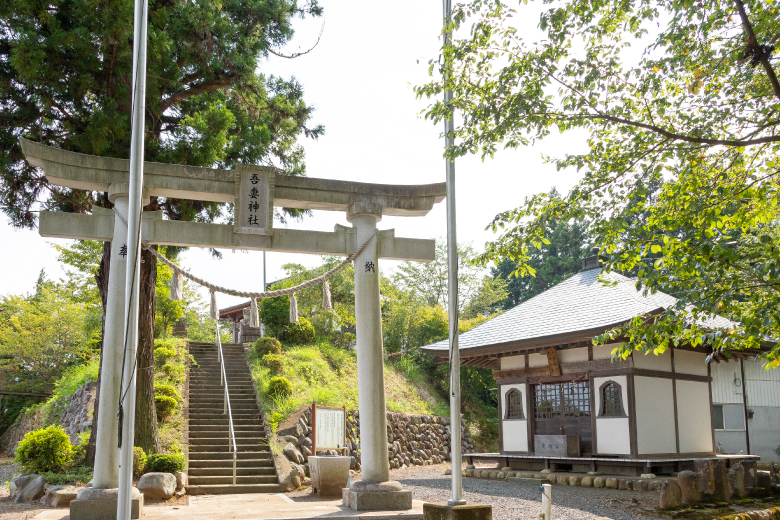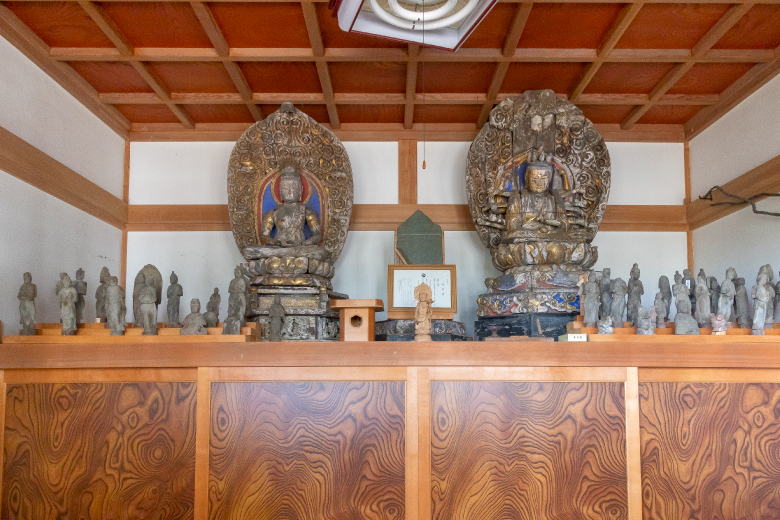Because there was a large sawtooth oak tree on the grounds of the shrine, the village was named Okunugi (large sawtooth oak) Village. This shrine is called Okunugi Kannon-do Hall. It is home to a seated statue of the thousand-armed Goddess of Mercy and a seated statue of the Dainichi Buddha.
These statues were thought to have been created between the early and middle Edo Period (1603-1868). In a topography from the Edo Period entitled “Kai-Koku-Shi” (Records of the Kai Region), there is a description of there being “two principal images of Buddha, a Dainichi Buddha and a thousand-armed Goddess of Mercy.”
Both statues are approx. 60 cm tall and feature joined-block construction. They are relatively large compared with other statues of that time, and have stable features. Their faces are long with round cheeks. Both are cultural properties designated by Uenohara City.
These statues were thought to have been created between the early and middle Edo Period (1603-1868). In a topography from the Edo Period entitled “Kai-Koku-Shi” (Records of the Kai Region), there is a description of there being “two principal images of Buddha, a Dainichi Buddha and a thousand-armed Goddess of Mercy.”
Both statues are approx. 60 cm tall and feature joined-block construction. They are relatively large compared with other statues of that time, and have stable features. Their faces are long with round cheeks. Both are cultural properties designated by Uenohara City.

